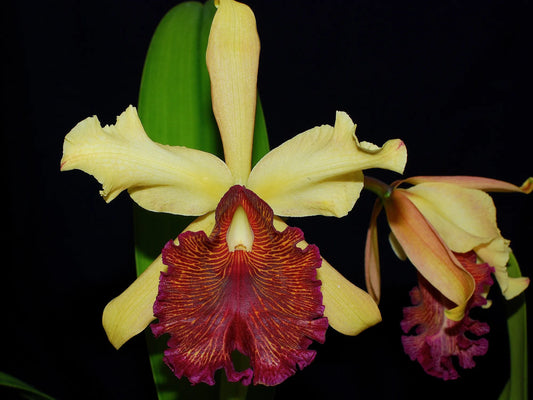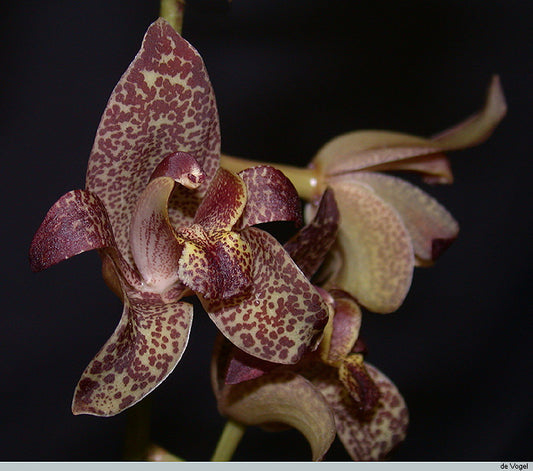Vanda Care Guide
Light is a crucial factor in blooming most vandaceous plants. There are three types of vandas: strap-leaved, semi-terete and terete. The first type has broader, flat leaves, while terete types have round, pencil-shaped leaves. The semi-teretes are hybrids between the two, with an intermediate leaf shape. Terete types need full sun, and are best grown in high-light climates. In a greenhouse, give the plants about 25 to 35 percent shade, less in winter if overcast. Leaves should be a medium green, not dark green. In warm, bright climates, you can grow any type of Vanda outside (if warm) with partial shade for strap-leaved types and semi-teretes (especially in midday in summer) or inside (when cold) in a bright, south window. In climates where winters are overcast, try ascocendas. Grow them outside in summer and in full sun inside during the winter. Be careful to aclimatize plants to avoid burn.
Temperatures for most vandas should be warm; a minimum night temperature of 13° C is recommended. Colder spells can be tolerated for a short time if it is not windy. Optimum temperatures are 16° to 21° C at night, and a maximum of 35° C during the day. Warmer temperatures mean faster growth, which must be balanced with higher humidity, air movement, and increased water and fertilizer. Days should be warm and humid for optimum plant growth.
Water should be applied copiously when the plants are growing, but the roots must dry quickly. Because of this, and their extensive root system, they are mostly grown in slatted-wood baskets, or in pots with a coarse potting medium. If their situation is warm and sunny, they may need daily watering. Water sparingly in the winter or during cloudy weather.
Humidity of 80 percent is ideal. In tropical climates this may be easy to obtain. In a greenhouse, this is easier to provide by using an evaporative cooler. In the home, place the plants on trays of gravel partially filled with water. Air movement must be strong.
Fertilize with a balanced (such as 20-20-20) fertilizer applied full strength once a week during warm weather or use a one-quarter-strength solution at every watering. During cool or cloudy weather, apply fertilizer once every two to four weeks. Use a high-phosphorus fertilizer (such as 10-30-20) every third application to promote flowering.
Potting should be done in the spring. Plants in baskets do not need to be repotted often. Leave them unless the potting medium breaks down. Set the plant, with the old basket intact, into a container of water to make the aerial roots more pliable, and then set plant and basket into a larger basket. For plants in pots, repot in a slightly larger pot, positioning the plant in the center. Use a coarse medium, whether fir bar, tree fern or charcoal, and work it around the roots. Keep shaded, humid, but drier at the roots until new root tips grow. Do not overpot.
Source: https://www.aos.org/orchids/culture-sheets/vanda.aspx








